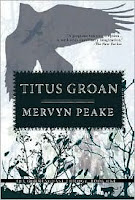Roger Ebert's 2002 book "The Great Movies" is a collection of essays about 100 of his favorite films. One evening in the late summer of 2007, after drinking quite a bit of wine, I browsed through a used copy of the book that had washed up in our collection and thought "Man! These movies sound great! They ALL sound great!!!
"I should watch them," I thought. "I should watch them all." And that's how this project was born.
From Aguirre, the Wrath of God in September 2007 to Greed in June 2010, I slowly but surely made my way through the list. Some of the movies I found incredibly moving or entertaining. Others didn't have an enormous impact on me, but I recognized the excellence of their craft, or their historical significance, or their importance to the evolution of the medium. And occasionally -- but not very often -- I just thought Mr. Ebert was mistaken.
It was a terrific journey. I know a lot more about films and film history than I did at the beginning of the project, and -- since the arts are always a mirror to the societies that produce them -- a lot more about the way the people of the 20th Century thought, felt, acted, and deluded themselves with their collective fantasies. I would definitely recommend this project to anyone with three years worth of evenings on their hands!
The Index
2001: A Space Odyssey. October 2007.
The 400 Blows. October 2007.
8 ½. October 2007.
Aguirre, the Wrath of God. September 2007.
Ali: Fear Eats the Soul. November 2007.
All About Eve. November 2007.
The Apartment. January 2008.
Apocalypse Now. March 2008
The Apu Trilogy (Pather Panchali, Aparajito, The World of Apu). January 2008.
Battleship Potemkin. January 2008.
Beauty and the Beast. February 2008.
Belle de Jour. January 2008.
The Bicycle Thief. July 2008.
The Big Sleep. January 2008.
Blow-Up. February 2008.
Body Heat. January 2008.
Bonnie and Clyde. February 2010.
The Bride of Frankenstein. September 2008.
Broken Blossoms. June 2008.
Casablanca. January 2010.
Chinatown. March 2010.
Citizen Kane. November 2009.
City Lights. September 2009.
Days of Heaven. March 2008.
The Decalogue. June 2008.
Detour. March 2008.
Do the Right Thing. October 2009.
Double Indemnity. March 2008.
Dracula. September 2009.
Dr. Strangelove. April 2010.
Duck Soup. October 2007.
E.T. September 2009.
The Exterminating Angel. September 2009.
Fargo. November 2009.
Floating Weeds. November 2008.
Gates of Heaven. September 2009.
The General. August 2008.
The Godfather. August 2008.
Gone with the Wind. April 2010.
The Grand Illusion. July 2008.
Greed. June 2010.
A Hard Day's Night. February 2010.
Hoop Dreams. February 2010.
Ikiru. September 2008.
It's A Wonderful Life. May 2010.
JFK. July 2008.
La Dolce Vita. August 2008.
The Lady Eve. July 2008.
Last Year at Marienbad. December 2008.
L'Atalante. September 2008.
L'Avventura. October 2008.
Lawrence of Arabia. October 2009.
Le Samourai. October 2008.
M. September 2008.
The Maltese Falcon. November 2008.
Manhattan. December 2009.
McCabe & Mrs. Miller. December 2008.
Metropolis. January 2009.
Mr. Hulot's Holiday. November 2008.
My Darling Clementine. January 2009.
My Life to Live. May 2010.
Nashville. February 2009.
Network. October 2009.
Night of the Hunter. January 2009.
Nosferatu. March 2009.
Notorious. January 2009.
On the Waterfront. May 2009.
Pandora's Box. February 2009.
The Passion of Joan of Arc. March 2009.
Peeping Tom. February 2010.
Persona. February 2009.
Pickpocket. February 2009.
Pinocchio. July 2009.
Psycho. February 2010.
Pulp Fiction. February 2010.
Raging Bull. February 2010.
Red River. March 2009.
Schindler's List. May 2010.
The Seven Samurai. April 2009.
The Seventh Seal. March 2009.
The Shawshank Redemption. March 2010.
The Silence of the Lambs. December 2009
Singin' in the Rain. April 2009.
Some Like It Hot. March 2009.
Star Wars. January 2010.
Sunset Boulevard. November 2009.
Sweet Smell of Success. May 2009.
Swing Time. June, 2009.
Taxi Driver. April, 2009.
The Third Man. June 2009.
Trouble in Paradise. July 2009.
Un Chien Andalou. June, 2009.
The "Up" Documentaries. November 2007.
Vertigo. January 2010.
The Wild Bunch. July 2009.
Wings of Desire. December 2009.
The Wizard of Oz. October 2009
Woman in the Dunes. May 2009.
A Woman Under the Influence. June 2009.
Written on the Wind. June 2009.


















































